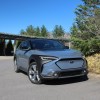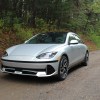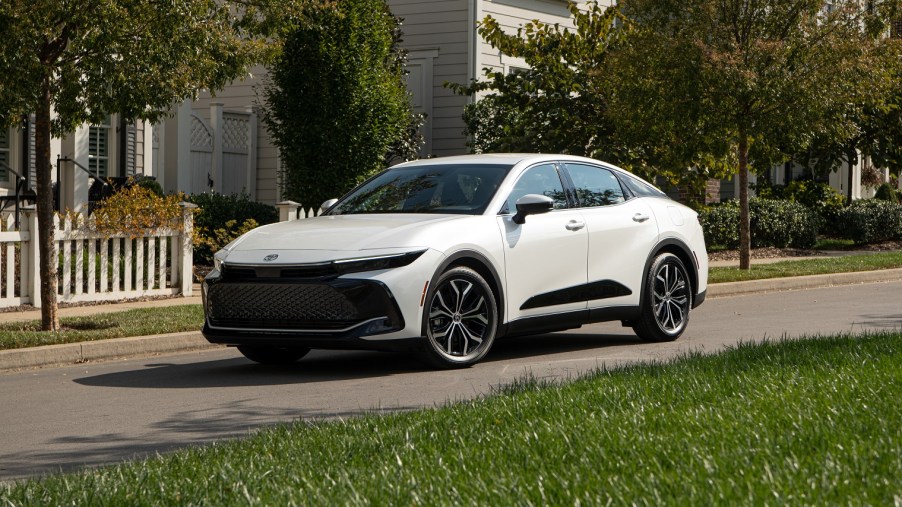
Toyota Crown Review: 3 Pros and 2 Cons
The Toyota Crown might be the equivalent of an identity crisis in automotive form. It’s a sedan, but it’s about as tall as a small SUV. It’s a full-size car but returns compact-like mpg figures. It has a large footprint but it’s not particularly commodious inside. It’s a new take on the Toyota Avalon, but some of the styling cues, like its blacked-out grille, remain. You can even the Crown in a two-tone paint scheme. It seems the Crown doesn’t quite know what it wants to be. That’s not necessarily a criticism so much as an observation.
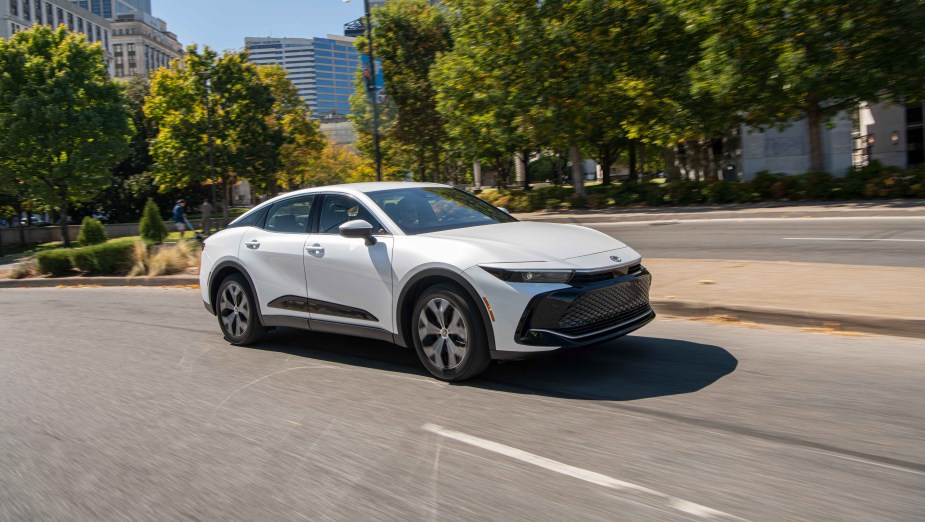
I recently spent a week behind the wheel of the 2023 Toyota Crown Limited, the midrange model of the group. And like its overall personality of seemingly opposable forces, the Crown gets quite a bit right, but it has its share of downsides.
Pro: The Crown is particularly efficient with its standard hybrid system
The Toyota Crown is only available as a hybrid, and two powertrain options are available. The base setup, fitted to the XLE and Limited models, pairs a 2.5-liter four-cylinder engine with two electric motors dishing out 236 horsepower with a continuously variable transmission. The top-spec Platinum model sports Toyota’s Hybrid Max powertrain, a 2.4-liter four-cylinder and two electric motors for a combined 340 horsepower. The Hybrid Max system pairs with a six-speed automatic transmission.
The base engine is the more efficient setup, and it returns impressive fuel economy given the Crown’s large footprint and standard AWD. XLE and Limited models will return 41 combined mpg, according to the EPA. That figure bests what buyers can expect from a non-hybrid compact sedan. For instance, the 2023 Hyundai Elantra is rated for 37 combined mpg.
To note, the Crown is the only hybridized non-luxury full-size sedan available. Rivals like the Volkswagen Arteon, Nissan Maxima and Dodge Charger are rated for just 23-25 combined mpg in their most efficient guises.
Con: A lack of rear passenger headroom and cargo space
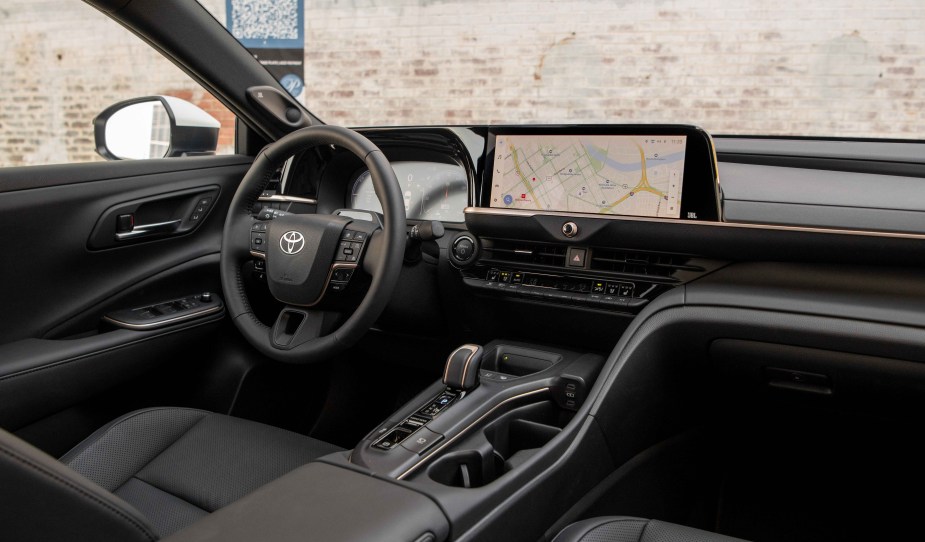
It’s easy to assume the Crown will offer plenty of passenger and cargo space given its dimensions — it’s several inches longer than the Arteon. But its footprint doesn’t necessarily translate to a roomy interior.
Front passenger space is ample, but the Crown’s sloping roofline infringes on rear passenger headroom. Those over six feet will notice.
The Crown’s trunk provides just over 15 cubic feet of storage space. That’s a full five cubes less than what’s offered by the far more compact Toyota Prius. The Arteon delivers a massive 27 cubic feet, meanwhile.
Pro: Comfortable driving dynamics
The Crown isn’t overtly athletic, but most hybrid sedan purchasers aren’t going to notice anyway. For everyday treks like chauffeuring kids or making the daily commute the Crown’s base hybrid engine provides respectable get-up-and-go with a 0-60 mph time of just over seven seconds. Ride quality is generally smooth. Some more aggressive road imperfections will be felt by passengers, but most bumps are well cushioned.
The steering is light without feeling disconnected, and the regenerative braking isn’t overly aggressive. Its seats are supportive, and thanks to its height, getting in and out is far easier than in a typical sedan.
The styling and cabin materials are also a step up from the typical Toyota. There’s a tinge of Lexus flavor in my midrange tester. To note, there’s also a smattering of plastics to remind passengers they’re in a Toyota.
The cabin is also mostly quiet, but the whine of the hybrid system is noticeable. To nitpick, the whine under braking has the same pitch as EMS/police sirens in the distance. It takes some getting used to. I discovered so while constantly looking in my mirrors to see if I needed to pull over.
Con: Pricing can be called in question
The 2023 Crown has justifications for its $41,045 starting MSRP. It is well equipped with creature comforts and convenience features. My midrange model is equipped with amenities like a panoramic glass roof, heated seats throughout, ventilated front seats, a JBL sound system, 12.3-inch touchscreen and leather upholstery. There’s also a full suite of active safety features.
But for the price, buyers who are already interested in a high-riding, er, ride, may opt for an SUV given the Crown’s price. For instance, the top-spec Toyota Venza costs about the same as the midrange Crown. The Venza is also more upscale and better equipped than your typical ‘Yota, it’s only slightly down on power and efficiency to the Crown and it provides far more cargo space.
For being the only full-size hybrid non-luxury sedan, the Crown earns pricing points over the more expensive Arteon and only slightly cheaper Maxima. But buyers who aren’t dead-set on a sedan might be swayed by joining the SUV ranks for price the Crown demands.
Pro: The Crown is unique
The Crown’s rather oddball looks won’t find favor among all buyers. Its two-tone paint also exudes a sporty sense the hybrid sedan’s performance doesn’t necessarily deliver. But of course, these things are subjective. The Crown doesn’t look like any other new model on the road, and its distinctiveness is easy to appreciate.
It straddles the line between midsize and full-size, SUV and sedan and mainstream/luxury. The result is that it’s quite unlike anything else on the market.
It remains to be seen if the Crown’s unique standing will find favor among buyers, but at least Toyota is trying something different.
